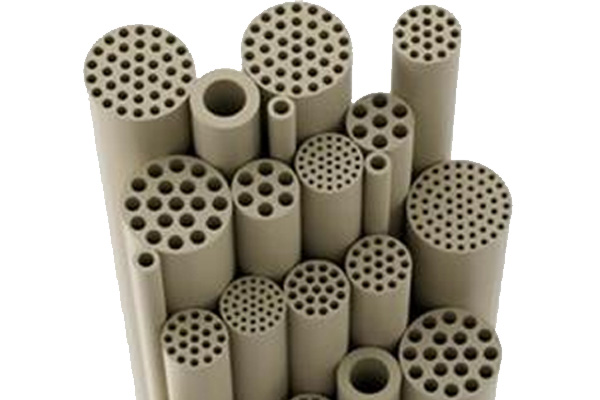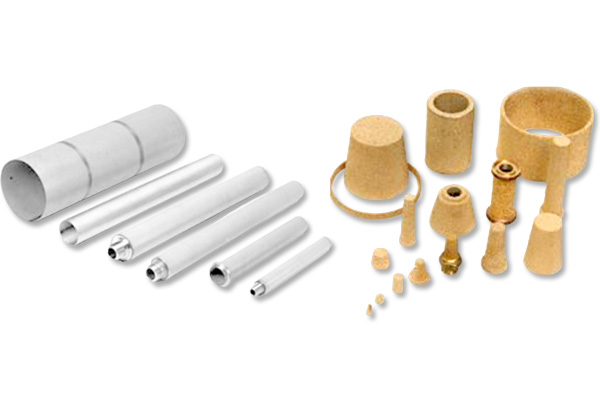
Ceramic membranes represent a revolutionary filtration technology, which meets many end -user demands todays as well as the future by providing current & future compliance of environmental regulations as well as sustainable productions. In addition to fighting the global problem of clean water by enabling water reuse, recycling, & recovery , ceramic membranes contribute to low energy consumption & small foot print.
Ceramic membranes can be used for the separation of single gases from gas mixtures or in membrane reactors.
INNOVATIVE FILTREX™ is proud to introduce Lab Scale, Pilot, Packaged, Mobile, Tailor-Made Process & Non-Water Process units with state of the art, in-house developed Ceramic Membranes with complete design & engineering, system integration in collaboration with other world class technology providers for multiple applications & multiple industries.
Features

Sintered porous metallic filters and components are sintered stainless steel or bronze parts with high porosity (between 25% and 60% by volume).
They are produced by the powder metallurgy technology, which consists of shaping a mixture of metal powders in a mould or tool that has the negative shape of the part and then sintering the resulting preform. The preform may be created by gravity filling, by uniaxial or isostatic pressing or by extrusion, depending on the material to be shaped, the desired porosity and the component geometry.
Sintering consists in heating the preform to a temperature lower than the melting point of the base metal (between 700ºC and 1300ºC) under carefully controlled conditions of atmosphere and time. The temperature causes the powder particles to weld together.
The result of this process is a structurally functional metallic part with a controlled microporosity level.
Our sintered porous tubes are made of 316L stainless steel. They are made by isostatic compaction of powder in a flexible mould with the negative shape of the part, and then sintered. The pore size is adjusted by changing the compaction pressure and/or the particle size of the powder.
These filters are commonly used for dead-end microfiltration of gases at high temperature or pressure and of liquids in a cross-flow filtration regime. Connections of different geometries are often incorporated at the ends ( as BSP or NPT standards or to customer specifications ).

Stainless Steel metallic membranes are an innovative sintered product formed by a porous metal core of 316L stainless steel with thin walls whose internal diameter is covered by a fine ceramic layer of very small pore size (up to 60 nm of cut-off) .
These characteristics allow metallic membranes to be used in microfiltration and ultrafiltration facilities for the food (beverages, dairy products, etc.), pharmaceutical, chemical and petrochemical industries or for wastewater purification and treatment, among other applications.
Metallic membranes have a series of advantages compared with current market standards.Higher toughness and resistance to mechanical or thermal shocks than ceramic membranes.
This advantage provides :
